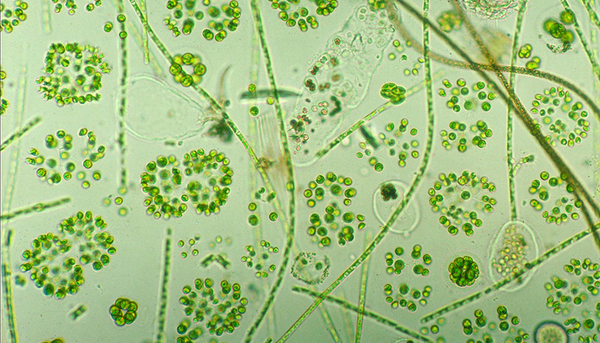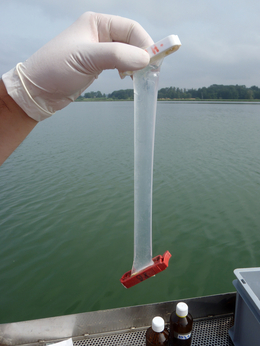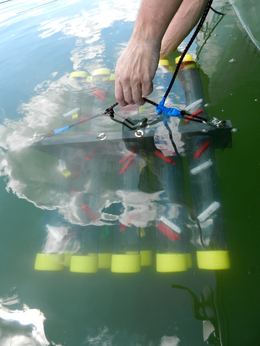News Detail
Plankton diversity reduced by water-borne pharmaceuticals
April 11, 2017 |
According to a study by Eawag aquatic ecologists, published in PLoS ONE, relatively low concentrations of pharmaceuticals and personal care products can affect the diversity of aquatic organisms. In this study, the scientists used small, semi-permeable bags deployed for a week in a lake (Greifensee) to investigate the diversity of phytoplankton (microscopic, photosynthetic organisms). Rather than distinguishing individual species, they measured phenotypic diversity on the basis of traits such as cell/colony size, fluorescence and pigment concentration.
Realistic exposure scenarios
The water in the experimental bags contained either unexposed phytoplankton communities (controls) or communities exposed to a mixture of twelve active substances from pharmaceuticals and personal care products, in three different concentrations. Project leader Francesco Pomati emphasizes that the exposure scenarios adopted are realistic: mixtures containing these substances and concentrations are found in the environment. The highest concentration used in the experiment is similar to the concentrations that can be measured downstream of wastewater treatment plants. The conditions in the bags were also realistic; in contrast to laboratory experiments, the microcosms were subject to naturally fluctuating environmental conditions in the lake, such as light, temperature, currents or nutrient levels. In addition, as the experiments were carried out at depths of 1, 3 and 6 metres, stressors such as decreasing light and lower temperatures at greater depths could also be taken into account. It was thus possible to determine whether the effects on plankton communities were in fact due to the chemicals rather than to other factors.
Capacity to respond to environmental changes
At the end of the experiment, a scanning flow cytometry method developed at Eawag was used to measure individual-level traits and community biomass. The results indicate that, both for individual organisms and for entire communities, diversity decreased as the concentration of micropollutants increased. For example, individual organisms showed less variance in length and pigment concentration. Interestingly, the less diverse (exposed) communities showed greater biomass than the unexposed controls. For Pomati, however, this is not in itself a contradiction. His hypothesis – which he plans to test in new projects – is that, because diverse communities are highly flexible in responding to environmental changes, their reproduction rate is lower than for more homogeneous communities, which remain largely unchanged. But in the long term, Pomati believes, it is precisely the capacity to adapt to fluctuating environmental conditions that is essential for survival.
Left: The type of bag used for the experimental phytoplankton communities (microcosms). Right: The microcosms were deployed in tubes at depths of 1, 3 and 6 metres in Greifensee. (Photos: Eawag)
Original publication
Pomati F, Jokela J, Castiglioni S, Thomas MK, Nizzetto L (2017). Water-borne pharmaceuticals reduce phenotypic diversity and response capacity of natural phytoplankton communities. PLoS ONE 12(3): e0174207. http://dx.doi.org/10.1371/journal.pone.0174207



